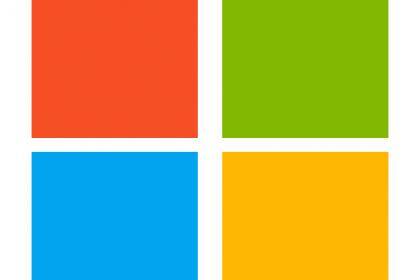A whirl wind of contracts, webinars, meetings and phone calls the new cost structures are in for Broadcom vision for VMware.
As expressed and anticipated last year, Broadcom has migrated to a full subscription model. Thereby effectively migrating every Enterprise VMware customer to a monthly to a yearly subscription based product. A full product at that, so no matter how little our VMware foot print is, you will be paying for the works.
But they haven’t stopped there. Service Providers and Partners where not overlooked, There has been a complete cleanout and replacement of the entire partnership and wholesale division. With the biggest change to Service Providers being the transition from RAM based subscriptions back 360 degrees to CPU based. This was a quick and sudden change, that will cause cost blow outs for these providers whilst they scramble to either drop VMware or reorganise there underlying infrastructure.
What good has come? Technically, I’m not sure yet… Watch this space. The Broadcom stock price has risen substantially, so the market seems to think Broadcom is on the right track with its VMware changes.
Personally, I’m not sue how many corporates can justify continually running this platform into the future, no matter how much better it is to the competition.
What do the VMware offerings to corporates look like ?
Since the acquisition, Broadcom has significantly reduced the number of available VMware product offerings. With more than half of the features being discontinued, the remaining features have been packed into two bundles, marking a shift from offering standalone point solutions to a more streamlined product portfolio:
VMware Cloud Foundation: incorporates a full-stack hyperconverged infrastructure (HCI) and provides vSphere (Compute), vSAN (Storage), NSX (Networking), and some parts of the new Aria Suite (formerly vRealize Suite).
VMware vSphere Foundation: the core package to provide private datacentre offerings and includes Enterprise vSphere Plus (Compute), NSX (Networking), vCentre standard (Management), Aria Suite Standard (formerly vRealize Suite), vSAN Enterprise (as an addon).
What are the new Costs and implications ?
One of the most immediate impacts of the acquisition has been on VMware’s licensing model, whereby Broadcom, has transitioned from perpetual licenses to a subscription-based model. As discussed previously this was fully expected to make the acquisition financially viable. In has been reported that in some cases, customers have reported price jumps of up to 600 percent. Although these numbers can be pulled from anywhere, especially, like many of our clients, if you have been ruining older version on perpetual licenses for years. Or even higher percentages, if you are running the free VMware ESXi server which as expected has been removed from the offerings.
Service Providers and Managed Service companies have also been analysed in this change. With the monthly subscription model changed from RAM usage back to CPU and core count. This too leading to substantial cost increases to all parties especially since the notice time has been so short on this major change. Service Providers will not have been able to significantly modify underlying infrastructure so will be caught out at least in the short term on this massive change.
Broadcom executives have defended the subscription model, arguing that the new subscription model bundles in comprehensive support. They have also suggested those customers using at least two components of VMware’s flagship Cloud Foundation will end up paying less.
What are the Downfalls
Obviously the biggest downfall expressed throughout the IT community at present is the new pricing model. It doesn’t matter what anyone claims or does, this model of course is intended to increase Broadcom’s revenues going forward. It would not have purchased VMWare if this was no the case.
However, I think the speed, lake of information and execution of these changes play a more significant role in the dissatisfaction from end users. That may have only been the experience, here in Australia, where I expect the footprint of VMware is not substantial. However, I doubt if that footprint is insignificant and I believe the fallout from the way these changes have been executed here will significantly reduce VMware’s presence here. I have heard from many colleagues and industry representatives who will be significantly reducing their VMware platform this year following this event.
On the Enterprise front, the discontinuation of perpetual licenses led to concerns, arguments and stress over the forfeiture of existing investments in these licenses. For those not on Support and Subscription (SnS) customers who own perpetual licenses would not be entitled to new versions, direct support from VMware, or critical security updates.
It has also been announced this week that it has made changes to the way it communicates security advisories. Starting May 6, 2024, all past and future VMware Security Advisories will be hosted on the Broadcom Support Portal. Hidden from public view and security blogs and newscasters.
Are there any Benefits ?
Although the transition to the subscription based model for Enterprise was rushed and in my opinion badly executed. Ultimately as with all current software this was a no brainer for Broadcom and they should to be penalised for this. If you where going to remove VMware for going this way, you would run none of the Tier 1 software. VMware is still by far the number 1 leading Virtualisation Platform. The test will be over the next 12 months, in what innovations is there for VMware and what will the price increase look like.
The simplification of the offerings, is music to our ears because as VMware has grown, as to has the products and the blurred crossover between each on. Bundling all the products into two offerings makes it simple for resellers and clientele alike. The new VMware Cloud Foundation and VMware vSphere Foundation bundles integrate several VMware technologies, providing a more comprehensive offering for all clients to experiments with and evolve their virtualisation platforms.
Where does VMware go next ?
I think VMware will always have a role in our short term cloud future. The alure from Microsoft Azure, especially now with their huge investment in AI will be a tantalizing morsel for even the most dedicated on-premise/in house Enterprise Builder.
With that said, the innovations Broadcom can bring to VMware such as Cloud Native Platforms, which VMware are classifying as the “Fourth Age of Virtualisation”. This will be an exciting time for Virtualisation and provides a completely new generation, perhaps even the birth of true, Virtualised Computing.
Who knows, even Microsoft might be tempted to use it ….







